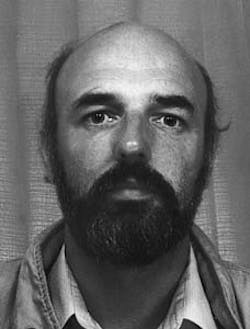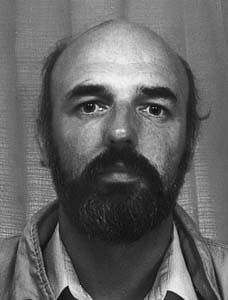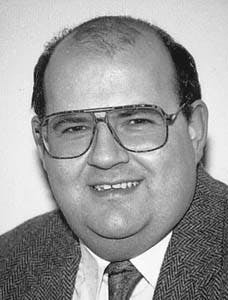Low sulfate seawater mitigates barite scale
J.A. Hardy, I. SimmLow-sulfate seawater (LSSW) technology provides operational and economic benefits for desulfating seawater to control barium sulfate (BaSO4) and strontium sulfate (SrSO4) scale.
Marathon Oil UK Ltd.
Aberdeen
This concluding article in a three part series (started in OGJ Nov. 25, p. 59) describes, from a scale control perspective, the membrane technology deployed in the North Sea Brae fields.
Barium sulfate scale
Waterfloods with seawater in many parts of the world, including the North Sea,1-5 often have problems with barium sulfate scale.
Scale formation downhole occurs after injected water breaks through at a producing well where barium-containing formation waters are coproduced with sulfate-containing injected water.
In many North Sea fields, the barium content of the formation waters is typically in the 10-200 mg/l. range. However, in the South and Central Brae oil fields, the formation water barium content is much higher and varies according to depth, from about 800 to 2,500 mg/l. (Table 1 [35957 bytes]).
Because of high barium content, the amount and the thermodynamic driving force forBaSO4 scaling upon mixing the formation water with the seawater are much higher than for more typical waters with less barium.
Although high barium levels are also found in other North Sea fields, such as T Block,6 South Brae was the first to be developed.
Early inhibitor evaluations suggested that because of the high supersaturation levels, barium sulfate scale would be difficult to inhibit, particularly downhole. The high CO2 content in the produced fluids (30-32 mole % in the gas phase) and consequent low formation water pH further limited inhibition because, at the predicted downhole 4-4.5 pH, the efficiency of most conventional inhibitors is limited.
Brae fields
The South Brae, in Block 16/7a of the U.K. sector of the North Sea, was developed from a fixed platform, Brae A. The reservoir and its geology are described in Reference 7. First oil production was in 1983, and seawater injection began in 1984.
The Central Brae field, also in Block 16/7a, was developed as a subsea tieback to the Brae A platform, and its first oil production was in 1989. Since 1990, production has been supported exclusively by injecting low sulfate water
Sulfate removal
As discussed in the first two parts of this series, membranes were developed and installed to selectively remove sulfate ion from seawater.8 In tests the membranes achieved 97% rejection of sulfate, resulting in a reduction of sulfate in seawater from typically 2,700 mg/l. to less than 100 mg/l.
Table 2 [25774 bytes] shows typical produced and source brine compositions. Note that apart from slight rejection of divalent ions other than sulfate, the salinity is largely unchanged. This stability was significant because clay swelling and other possible detrimental effects of a compositional change should be minimized for the water injected into the reservoir.
Scaling predictions indicated that the low sulfate levels in the product brine would, upon mixing with formation water, reduce by more than an order of magnitude both the mass of barium sulfate formed and the supersaturation index.
This reduction in scaling potential has the important effect of significantly reducing, to realistic levels, the inhibitor concentration needed to prevent scaling. For downhole inhibition, this reduction is important when the inhibitor concentration returning following a squeeze is limited to low levels. This is particularly true at the tail of the treatment.
Because high sulfate seawater (HSSW) injection to the South Brae reservoir had been ongoing for 4 years prior to the availability of LSSW, the subsequent reservoir management strategy has been, where possible, to use LSSW in updip injection wells to provide a buffer of nonscaling water between downdip seawater injection and updip oil producers.
LSSW was injected into four South Brae wells at different times according to waterflood requirements. Yet it has not been possible to deploy LSSW to prevent HSSW breakthrough in all South Brae wells. However, installation of the sulfate-removal facility predated development of the Central Brae field. Therefore, it has been possible to ensure that LSSW has been the only water type injected into that particular reservoir.
After being proven in the Brae fields, membrane technology has also been deployed in the Gulf of Mexico9 and in the Tiffany development in the North Sea.6 The technology has also been successfully pilot tested in the Wilmington field in California.10
In addition to mitigation of barite scale a further potential benefit of LSSW, that of reducing souring in the reservoir, is discussed in the accompanying article (p. 68).
Early scale experience
In 1986, seawater breakthrough first occurred in producing Well A5 as evidenced by the depletion of barium in the produced water, followed by increasing sulfate levels (Fig. 1 [14029 bytes]). This breakthrough occurred prior to the development of a satisfactory scale-control strategy and resulted in the rapid deposition of scale downhole. A similar pattern followed in three other wells.
Following seawater breakthrough, BaSO4 deposition downhole has tended to be relatively localized in the liner, in the vicinity of the producing perforations. This localization is possibly due to the self-limiting effect of a relatively large mass of scale formed per unit volume of water that has subsequently shut off production.
This process contrasts with the more usual deposition of BaSO4 scale over several hundred feet of well bore and tubing seen in other fields under less severe scaling conditions.3 The relatively rapid deposition rate (typically occurring within 1-2 weeks of detection by water composition) and its location have had a rapid and dramatic impact on oil production.
Milling, using underreamers deployed either on a work string or on coiled tubing, was necessary to remove obstructions. Chemical dissolvers and hydraulic jetting had limited success in removing scale obstructions in the liner.
Where it has been feasible to do so without compromising oil production, mechanical isolation of watered out zones has been reasonably successful in shutting off water production.
Assessing the exact cost of the remedial work incurred specifically for scale problems, is difficult, but before a successful inhibitor program was instituted, in over 3 years about 14 workovers were carried out at a cost of £15-20 million (US $24-32 million). This estimate does not include the cost of deferred oil production. It was substantial because some wells had produced up to 10,000 bo/d.
However, a reliable method to prevent scaling was essential to avoid frequent and costly workovers.
Scale inhibition
As a result of an extensive evaluation of commercially available inhibitors, specific polyacrylate and phosphinocarboxylate-based inhibitors were identified as the most effective scale inhibitors available at the time.
These inhibitors were deployed in squeeze treatments, usually bullheaded from the surface, in an attempt to prevent the downhole scaling.
These inhibitor squeeze treatments were variable and were often unsuccessful in preventing subsequent BaSO4 deposition. Furthermore, a reduction in productivity index (PI) occurred following some treatments. Water cuts often failed to return to pretreatment levels.
These effects were variable between treatments and between wells with no consistent pattern to indicate the likely cause. However, losses of up to 6,000 bo/d were suffered in three wells. PI was unaffected when isolation methods such as sand packs or removable packers protected oil producing zones.
These problems were overcome when the primary problem was identified as inhibitor compatibility, and a nondamaging, polyvinyl sulfonate-based (PVS) inhibitor was developed.11 This inhibitor has been successfully deployed routinely in the field12 to control BaSO4 in wells with HSSW breakthrough.
This deployment was necessary in South Brae despite the use of LSSW because some wells produced seawater that was injected prior to LSSW deployment.
LSSW operations
LSSW first broke through at a producing well in January 1991.
The effect of the low sulfate content in reducing the precipitation of barium is evident from Fig. 2 [16606 bytes]. The barium concentration has been reduced only in proportion to the extent of dilution by injection water and has not been totally depleted as it would have been by mixing it with an equivalent amount of high sulfate seawater (HSSW).
In this case, the dilution based on the conserved chloride ion is calculated to be 65% and the barium is reduced proportionally. LSSW breakthrough has subsequently occurred in three other South Brae producing wells and the water composition has indicated the same positive benefits.
No evidence of barium sulfate scaling has surfaced, and therefore, wells have not been squeeze treated for control of BaSO4. However, as in other water-producing wells, irrespective of water type, the water remains susceptible to calcium carbonate scaling that is controlled when necessary by squeeze treatments.
The influence of LSSW waterflooding in South Brae has been and is likely to remain limited due to its late availability and restricted deployment. Consequently, the full benefits of seawater desulfation for scale control are unlikely to be realized in the South Brae field.
Nevertheless, results to date indicate that sulfate-removal technology reduced to minimal proportions, but not eliminated, theBaSO4 scale potential in those wells where LSSW breakthrough has occurred.
Although water injection into the Central Brae reservoir commenced in 1990, the effectiveness in controlling scale has not yet been tested since neither significant formation water production or injection water breakthrough has occurred to date. However, the South Brae experience augurs well for the subsea development of Central Brae into which the water injection has been exclusively LSSW.
An estimate is that its use will have even greater economic significance because intervention for a single subsea well is estimated to cost about £2 million (US $3.2 million).
An additional benefit of LSSW on the Brae A platform has been in well service work operations. The LSSW is a readily available source of high-quality, nonscaling brine for use in well service operations, particularly squeeze-treating wells.
This has eliminated the requirement for, and the cost of, making up brines offshore in applications where seawater was not suitable because of scaling potential.
LSSW cost
In general, cost benefits of LSSW for controlling a scale problem are dependent on several factors. These include the cost and viability of more conventional methods of controlling the scale, such as squeeze treatments, the water production rates, the proportion of injected water produced, and the number of wells affected by injection water breakthrough.
Therefore, cost benefits are likely to be field specific.
In Brae, base line costs of installing the plant on Brae A were about £7 million (US $11 million). The cost of producing LSSW varies between 2 and 4 pence/bbl (US $0.03-0.06/bbl) of water depending upon whether the plant is based in the Gulf of Mexico or the North Sea. This includes membrane replacement cost based on a conservative 3-year life. Current experience indicates that longer membrane life is likely.
In South Brae, the cost of LSSW was initially compared to the cost of removing scale, prior to the development of an effective inhibitor.
As noted above, the earlier cost quickly ran into millions of pounds, and even then the method did not guarantee that the problem would not recur. The economic justification for using LSSW rather than previous methods is obvious because of the estimated large number of workovers required in the absence of effective preventive measures.
Following the development of an inhibitor that could be deployed downhole to controlBaSO4, the cost of the LSSW has to be compared against that of inhibition using PVS (polymeric vinyl sulfonate). In South Brae wells suffering seawater breakthrough, the cost of inhibition is 13 pence/bbl-vs.-4 pence/bbl to inhibit calcium carbonate. These are relatively high values in both cases because of the volume limits on the size of treatments deployed in South Brae that restrict treatment lifetimes.
Therefore, on treating 25,000 b/d produced water, the annual chemical cost savings alone of £835,000 (US $1.3 million) are more than the operating cost of £660,000 (US $1.1 million) of producing the average injection requirement of 75,000 bw/d LSSW, with no guarantee that an occasional workover will not be required.
In addition, significant savings can be attributed to the reduced amount of deferred oil production because of fewer squeeze treatments required and the reduced risk of incurring workover or intervention costs due toBaSO4 scale formation in the event of a failure of the inhibitor.
Although PVS is a more effective inhibitor than most others under the prevailing downhole conditions, in wells with high levels of barium, it would be unrealistic to expect total inhibition. In comparison with the earlier high well intervention costs, in a relatively short time over the last 5 years, by implementing a successful scale control strategy, the scale removal costs have been reduced to an average of £1 million/year (US $1.6 million).
Had LSSW been available at the outset in the development of South Brae, further savings would have been realized on the cost of topsides inhibition necessary for commingling wells producing incompatible waters. An estimated savings of £360,000/year (US $600,000/year) should have been possible on treating 25,000 bw/d.
Acknowledgments
The authors wish to acknowledge the contributions of many colleagues within Marathon Oil Co. to the work summarized in this series. The authors are grateful to the Brae group partners (BP Exploration Operating Co. Ltd., British Borneo Oil & Gas Ltd., British Gas Exploration & Production Ltd., Kerr-McGee Oil (U.K.) plc., LL&E (U.K.) Inc., Sands Oil & Gas Ltd., Talisman Energy (U.K.) Ltd.) for permission to publish this series of articles)
References
1. Fielder, M., and Hughes, C.T., "Downhole Scale Control in the Thistle Field," 2nd International Symposium on Chemicals in the Oil Industry, Royal Soc. Chem., 1985.
2. Payne, G.E., "A History of Downhole Scale Inhibition by Squeeze Treatments on the Murchison Platform," Paper No. SPE 16539, Offshore Europe Conference, Aberdeen, 1987.
3. Carrel, K.D., "The Occurrence, Prevention and Treatment of Sulfate Scale in Shell Expro," Paper No. SPE 16538, Offshore Europe Conference, Aberdeen, 1987.
4. Tanner, R.N., and Whittingham, K.P., "Scale Control During Waterflooding Operations, A Field Appraisal of Inhibitor Requirements and Performance," Paper No. SPE 14127, International Meeting on Petroleum Engineering, Beijing, 1986.
5. Ray, J.M., and Fielder, M., "Downhole Scale Inhibition in the Beatrice field," 3rd International Symposium on Chemicals in the Oil Industry, Univ. Manchester, 1988.
6. Mazzolini, E., Bertero, L., and Truefitt, C.S., "Scale Prediction and Laboratory Evaluation ofBaSO4 Scale Inhibitors for Seawater Flood in High-Barium Environment," Paper No. SPE 20894, Europe '90, The Hague, 1990.
7. Phillips, I., "Reservoir Gas Management in the Brae Area of the North Sea," Paper No. SPE 22918, Offshore Europe Conference, Aberdeen, 1991.
8. U.S. Patent 4723603, "Preventing plugging by insoluble salts in hydrocarbon-bearing formation and associated wells," M.P. Plummer, issued in U.K. No. 2221700.
9. Heatherly, M.W., Howell, M.E., and McElhiney, J.E., "Sulfate Removal Technology for Seawater Waterflood Injection," Paper No. OCT 7593, 1994.
10. Scott, J.A., "Pilot Testing of Membrane Technology to Selectively Remove Sulfate Ion From Seawater in the Wilmington field," Paper No. SPE 25152, 1993.
11. U.S. Patent, 5092404, "Polyvinyl Sulfonate Scale Inhibitor," Falk, D.O., Dormish, F.L., Beazley, P.M., and Thompson, R.G., Mar. 3, 1992.
12. Hardy, J.A., Barthorpe, R.T., Plummer, M.A., and Rhudy, J.S., "Scale Control in the South Brae field," SPE Production and Facilities, May 1994.
The Authors
Jim Hardy is a senior production chemist with Marathon Oil U.K. Ltd. in Aberdeen. He has worked in process engineering and production departments on production technology problems in the Brae fields since joining Marathon in 1987.
Hardy has a BS and PhD in life sciences from the University of Cardiff and Aberystwyth, Wales.
I. Simm is a senior production engineer with Marathon Oil U.K. Ltd. in Aberdeen. He was responsible for setting up and running the pilot plants and the commissioning of Phases 1 and 2 of the full-scale plant. Simm has a BS in chemistry and ME in petroleum engineering from Heriot Watt University, Edinburgh, Scotland.
Copyright 1996 Oil & Gas Journal. All Rights Reserved.


